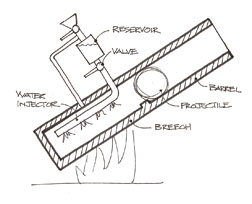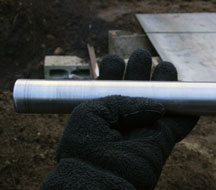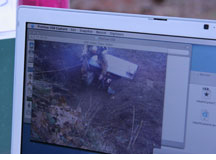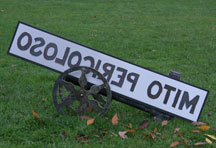Archimedes's Steam Cannon

Think that a half-cup of water is harmless? Watch this video, and don’t even consider trying to do the same thing at home. A one-pound projectile traveling at the speed of sound with 10 times the kinetic energy of an AK-47 bullet is not a toy. This experiment was performed under carefully designed and controlled conditions. Curious? Read on.
|
Don't see the video? |
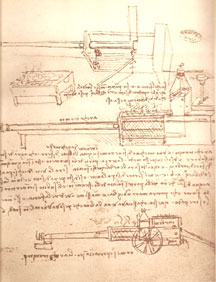 Archimedes's steam cannon, from Leonardo da Vinci, Volume II Istituto Geografico de Agostini Novara 1956. |
Prelude Being frustrated with the outcome, having a visit to MIT in their schedule, and remembering last year’s Archimedes’s death ray collaboration, the MythBusters asked us to take a look. They wondered if there was a simple, plausible solution compatible with da Vinci’s vague drawing and explanation of Archimedes's steam cannon. |
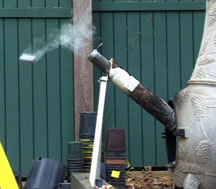 |
The pressurized steam must be generated quickly, before the projectile exits the cannon, perhaps in 0.005 seconds. But at 100,000 kiloWatts per square meter, the breech can only provide around 500 kiloJoules per square meter in such a short time, not nearly enough energy to produce high-pressure steam. Our conclusion? Direct injection is not likely to produce much more than a burp (.mov, 0.23 Mb). In 1981, Sakkas (see figures 23-25) recreated Archimedes’s steam cannon and incorporated a wood board into the concept to hold the projectile in place while some pressure developed, although da Vinci’s drawing does not show a similar feature. Even so, this produced a fairly low velocity projectile (perhaps 70 mph) that traveled only 50 meters. |
 |
For safety reasons, the cannon was placed below ground in a cinder block and steel lined fire pit. |
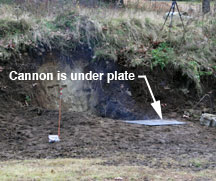 |
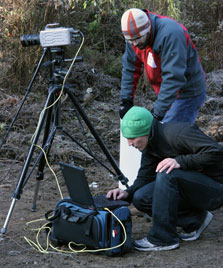 |
We observed the firings, which were aimed directly into a sandy berm, on remote monitors behind a hill 150 feet away from the cannon. |
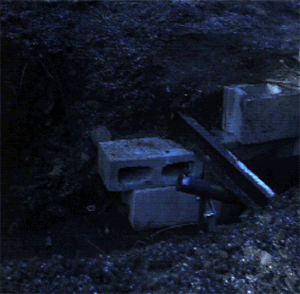 |
High-speed camera footage showed that the muzzle velocity was over 300 m/s (670 mph)! |
The shell’s kinetic energy was calculated to be approximately 23,000 Joules — 1.3 to 1.8 times the energy of a 0.50 BMG caliber bullet fired from a M2 machine gun. |
On impact, the thick nose of the shell was driven into its body and it was filled with soil, packed to the consistency of concrete.
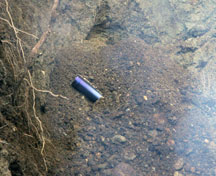 |
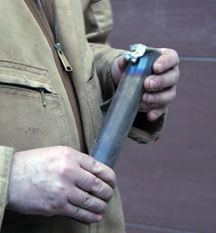 |
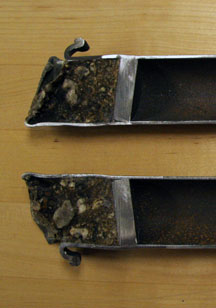 |
Interested in other 2.009 estimation exercises? See the demise of the Pony Express.



